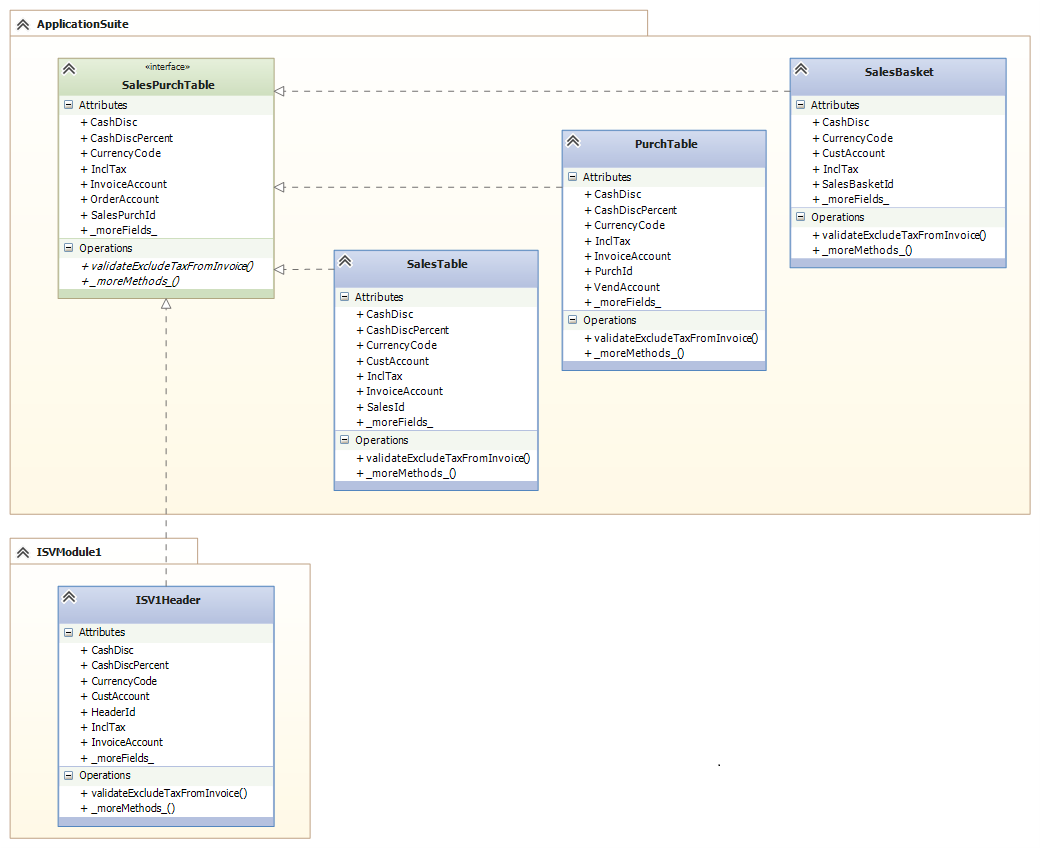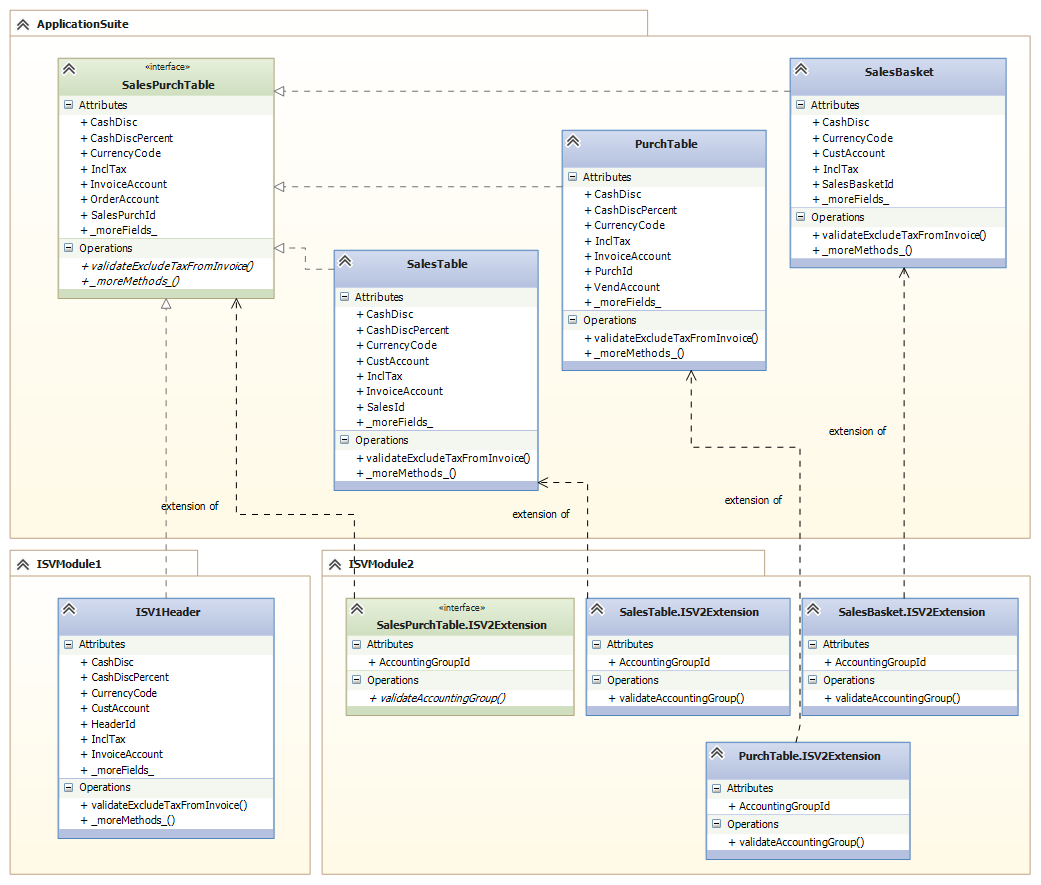Note
Access to this page requires authorization. You can try signing in or changing directories.
Access to this page requires authorization. You can try changing directories.
To extend table maps, we have refactored table maps into a model, which allows you to extend a solution with additional fields and methods. This article discusses why you need a model to extend a table map.
Adding a field to an existing table map through extension can present some challenges. If these issues are not addressed during the implementation, there can be runtime errors. The errors occur because the developer cannot modify all the tables that are involved in implementing the table map. The same is true for adding a method to a table map if the method is called directly as an instance method on the table map. There is no way to enforce how fields on table maps must be mapped to fields on all tables that implement the table map. Similarly, there is no way to enforce how methods on table maps must also be methods on all tables that implement the table map.
The following diagram shows the SalesPurchTable table map, which is implemented by the SalesTable, PurchTable, and SalesBasket tables in the ApplicationSuite model. In addition, the ISV1Header table implements the SalesPurchTable table map, but ISV1Header is part of an ISVModule1 model.

For example, if a new field named AccountingGroupId and a new method named validateAccountingGroup are added to the table map in the ApplicationSuite model, then the tables that you implement the table map can be updated to include the field and method added as well. The ISV1Header table in the ISVModule1 model is, however, outside of the control of the developer making the changes to the ApplicationSuite model.

If you add business logic to the ApplicationSuite model, and that logic queries the new AccountingGroupId field and the table map record is of type ISV1Header, a runtime error occurs.
SalesPurchTable headerTable;
...
...
if (headerTable.AccountingGroupId)
Similarly, if you add business logic to the ApplicationSuite model, and that logic queries validateAccountingGroup, then a runtime error occurs.
SalesPurchTable headerTable;
...
...
if (headerTable.validateAccountingGroup())
As a result, the solution is broken, unless you add mapping to the new field and add the new method to the ISV1Header table.
The conflict is not resolved if the ability to add fields or methods is added to table maps through extension. This is illustrated in the following diagram, where ISVModule2 includes extensions of the table map and the implementing tables in the ApplicationSuite model. The developer implementing ISVModule2 has no control over the ISV1Header table in the ISVModule1 model, so the ISV1Header table lacks a mapping of the AccountingGroupId field and implementation of the validateAccountingGroup method.

Even if the compiler enforced that all fields and methods on a table map must be mapped to all tables implementing the table map, the conflict would not be resolved. Instead of receiving runtime errors, adding a field or a method would clear a breaking change, as tables not having a new field mapped or a new method implemented would compile when the model containing the added field/method is applied. To extend table maps, we have refactored table maps into a model, which allows you to extend a solution with additional fields and methods.